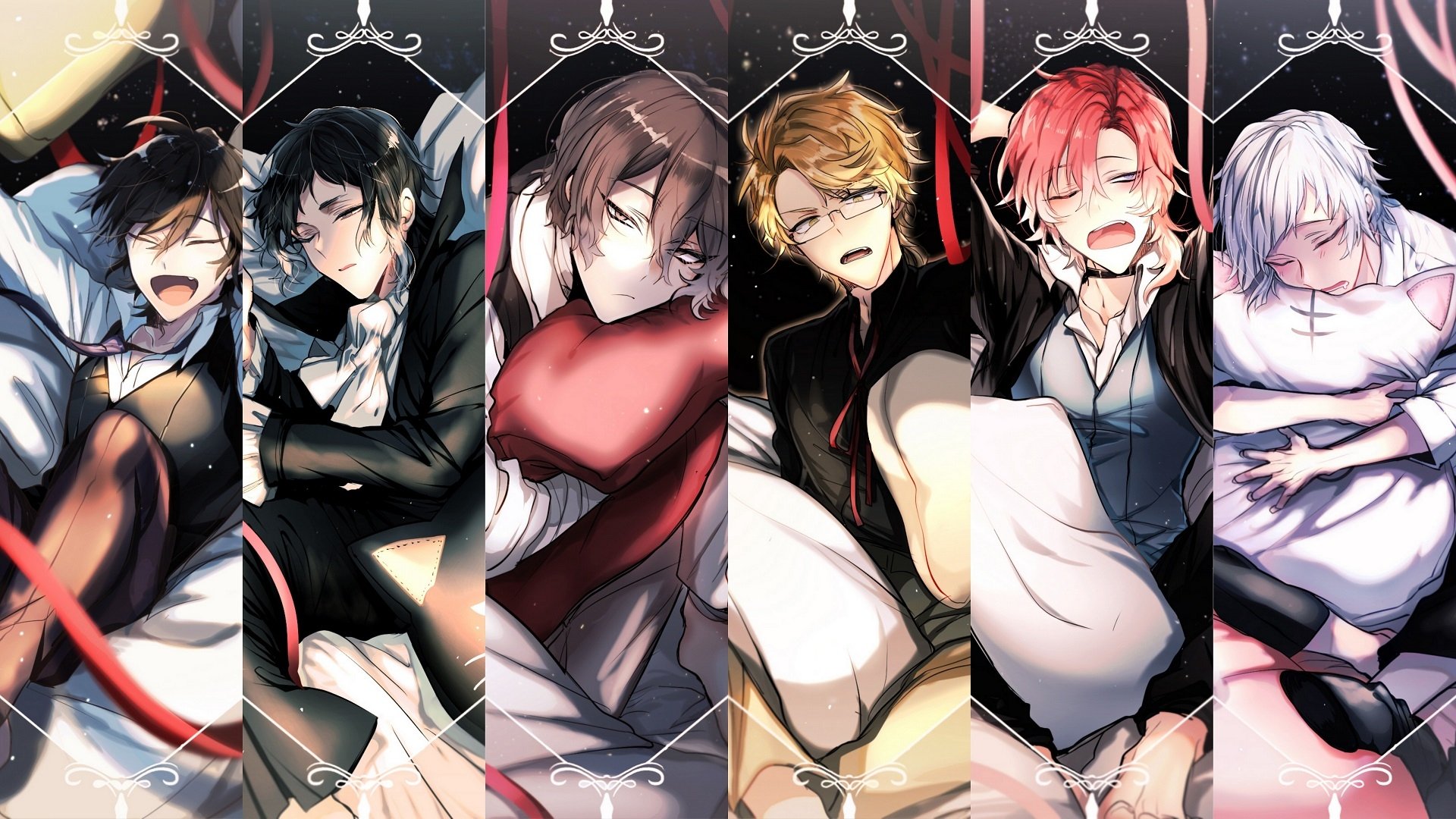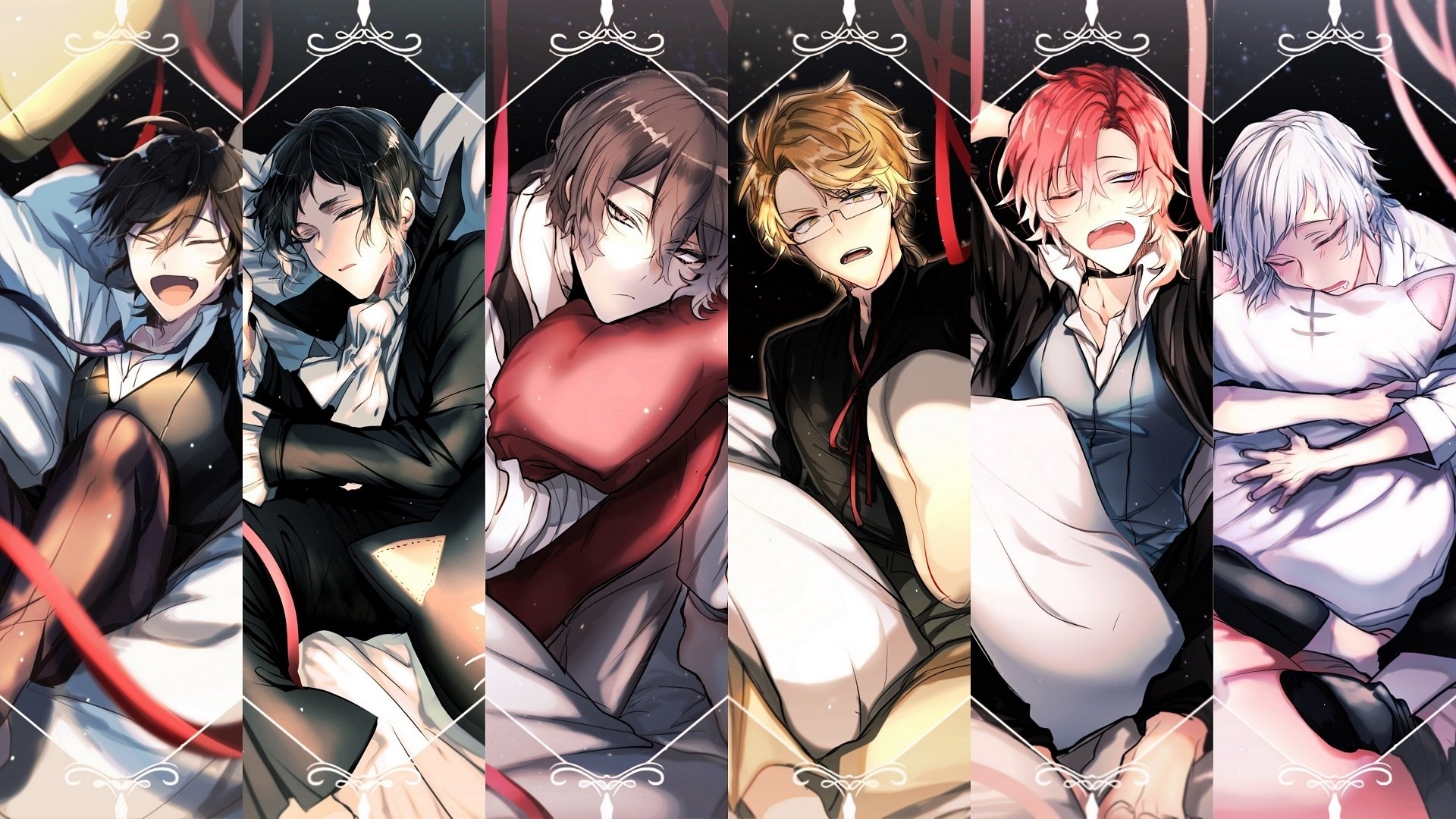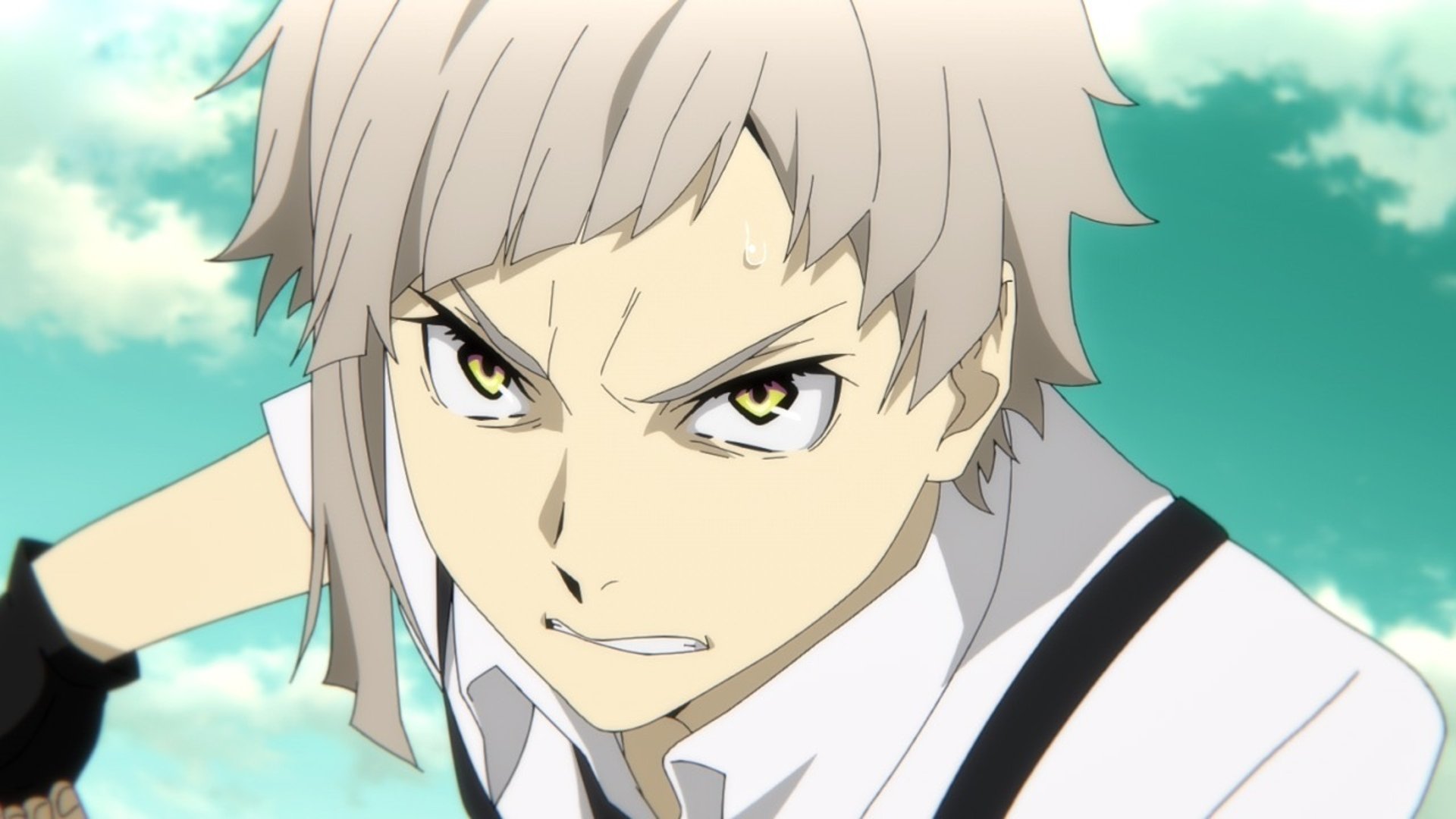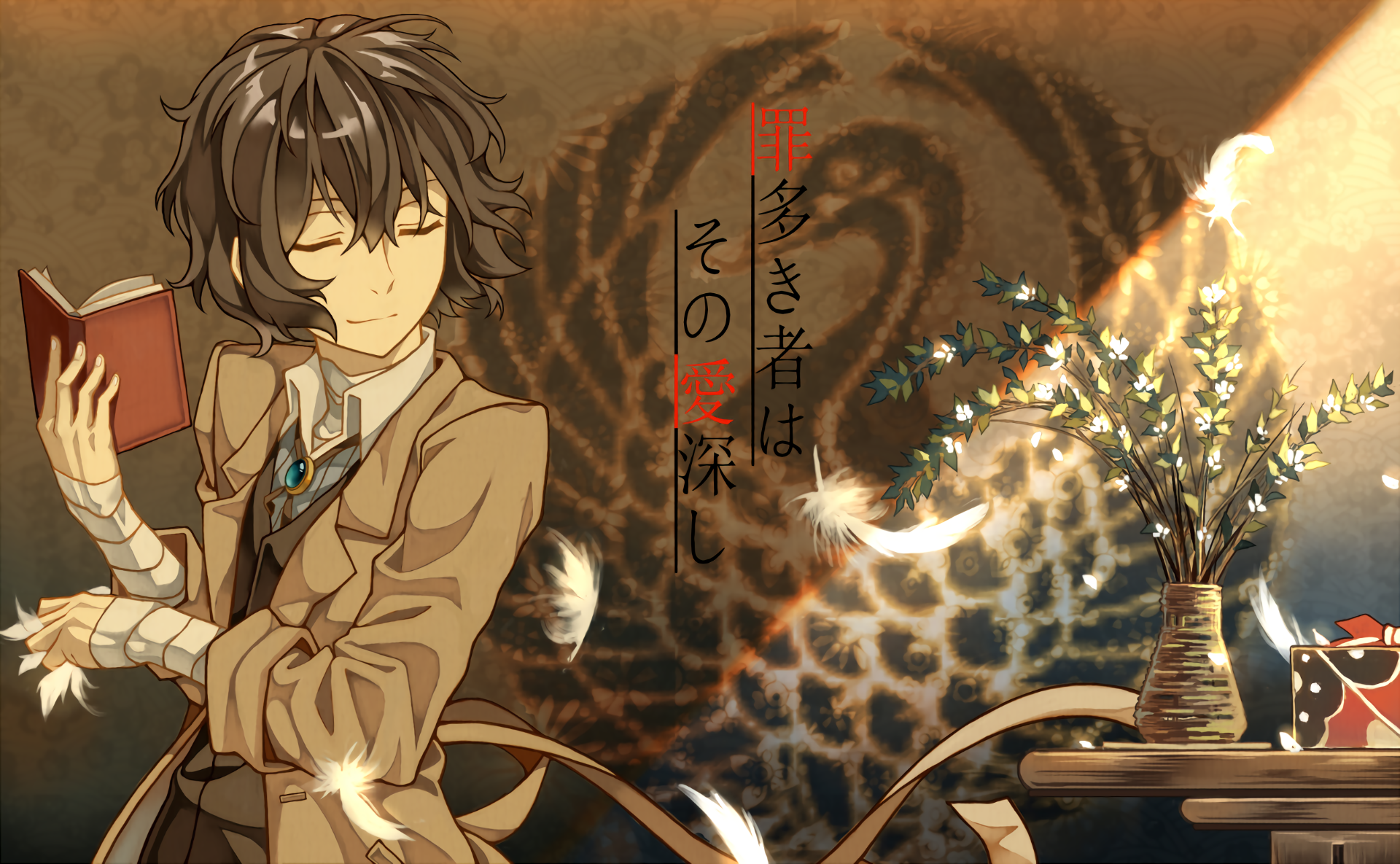In Bungo Stray Dogs Chapter 109, the intricate tapestry of the story unfurls, revealing hidden truths and setting the stage for pivotal confrontations. Prepare to delve into a world where literary giants clash, and the fate of Yokohama hangs in the balance.
As Atsushi Nakajima, Osamu Dazai, and Fyodor Dostoevsky take center stage, their motivations and inner struggles become increasingly evident. Their actions and interactions paint a vivid picture of loyalty, morality, and the nature of humanity itself.
Chapter Summary

Chapter 109 of “Bungo Stray Dogs” titled “The Blue King’s Scheme” unfolds with several key events, character interactions, and plot developments.
The chapter opens with Fyodor Dostoevsky and Sigma confronting Nikolai Gogol, revealing their plan to manipulate the Azure King, Dazai Osamu. They intend to use Dazai’s vulnerability and desire to save his friends to their advantage, orchestrating a trap that will ultimately lead to his downfall.
Bungo Stray Dogs Chapter 109 is a thrilling installment that leaves readers on the edge of their seats. The action-packed chapter sets the stage for an intense confrontation. While waiting for the next chapter, why not check out Chainsaw Man Chapter 134 ? It’s another gripping manga chapter that will keep you hooked until the very end.
Then, come back to Bungo Stray Dogs Chapter 109 to see how the conflict unfolds.
Dazai’s Conflict
Dazai, torn between his loyalty to the Armed Detective Agency and his desire to protect his friends, grapples with a difficult decision. He realizes that Sigma is using his past actions against him, exploiting his guilt and remorse to manipulate him.
Armed Detective Agency’s Intervention
As Fyodor and Sigma’s plan progresses, the Armed Detective Agency steps in, determined to protect Dazai. Kunikida and Ranpo deduce Fyodor’s true intentions and confront him, while Atsushi and Kyouka engage in a fierce battle with Sigma.
After the intense climax in Bungo Stray Dogs chapter 109, we can’t help but wonder what’s next for our favorite detectives. While we eagerly anticipate the upcoming chapter, why not dive into another thrilling adventure with jjk chapter 229 read ? It promises an equally captivating storyline that will keep you on the edge of your seat.
And once you’re done, don’t forget to come back and witness the continuation of Bungo Stray Dogs chapter 109.
Dazai’s Resolution
Despite the Agency’s efforts, Dazai remains conflicted. He understands Fyodor’s manipulation but also recognizes the danger his friends are in. Ultimately, he chooses to sacrifice himself to save them, vowing to confront Fyodor alone.
Clash of Abilities
The chapter concludes with an intense clash of abilities as Dazai confronts Fyodor. Dazai’s No Longer Human ability faces off against Fyodor’s Crime and Punishment, leading to an unpredictable and thrilling showdown.
Character Analysis

Chapter 109 of Bungo Stray Dogs delves into the intricate motivations and struggles of several key characters. Their actions, dialogue, and interactions provide insights into their inner turmoil and evolving relationships.
Atsushi Nakajima
Atsushi’s unwavering determination and newfound confidence are evident throughout the chapter. His unwavering belief in his comrades and his willingness to confront his fears head-on demonstrate his significant growth. He grapples with his past insecurities and self-doubt, but ultimately emerges stronger, ready to embrace the challenges ahead.
Osamu Dazai
Dazai’s enigmatic nature continues to puzzle both allies and enemies alike. His manipulative tactics and seemingly carefree attitude mask a complex inner world. His interactions with Atsushi reveal a genuine concern for his well-being, while his rivalry with Fyodor Dostoevsky exposes a deep-seated hatred and a desire for revenge.
Fyodor Dostoevsky
Fyodor’s sinister intentions and unwavering resolve are laid bare in this chapter. His cold and calculating demeanor, coupled with his manipulative abilities, make him a formidable adversary. His interactions with Sigma highlight his disdain for human life and his belief in the futility of morality. His ultimate goal remains shrouded in mystery, but his actions suggest a grand and destructive plan.
Symbolism and Themes

Chapter 109 of Bungo Stray Dogs is a rich tapestry of symbolism and themes, weaving together profound insights into the human condition. The imagery and motifs employed in the chapter resonate deeply, adding layers of meaning to the narrative.
The revelation of Fukuzawa’s ability in Bungo Stray Dogs Chapter 109 left us reeling, and while we wait for the next chapter, we can delve into the gripping narrative of Dungeon House Chapter 64. Dungeon House Chapter 64 takes us on a thrilling adventure as our heroes navigate treacherous traps and face formidable foes.
Returning to Bungo Stray Dogs Chapter 109, we eagerly anticipate the fallout from Fukuzawa’s revelation and its impact on the Agency’s future.
Symbolism
- The Burning City: The burning city serves as a metaphor for the chaos and destruction that can consume society. It represents the inner turmoil and moral decay that threaten to engulf the characters.
- The Black Dog: The black dog is a symbol of loyalty and protectiveness. It embodies the unyielding bond between Atsushi and Akutagawa, even amidst their differences.
- The White Tiger: The white tiger symbolizes strength, courage, and resilience. It represents the determination of the characters to overcome adversity and find their own path.
Themes
The chapter explores several overarching themes that resonate throughout the series:
Morality and Ethics
- The characters are faced with difficult moral choices, questioning the boundaries between right and wrong. The actions of the Guild and the Port Mafia challenge traditional notions of good and evil.
- Akutagawa’s struggle with his inner demons highlights the complexities of human nature and the tension between good and evil within individuals.
Loyalty and Betrayal
- The bond between Atsushi and Akutagawa is tested by the circumstances they face. Despite their differences, they remain loyal to each other, proving that loyalty can transcend adversity.
- The betrayal of the Guild members serves as a reminder of the fragility of trust and the consequences of treachery.
The Nature of Humanity
- The chapter delves into the complexities of human nature, exploring the darkness and light that can coexist within individuals.
- The characters are forced to confront their own flaws and limitations, ultimately leading to growth and redemption.
Literary Techniques

The author of Bungo Stray Dogs Chapter 109 employs a range of literary techniques to enhance the reader’s experience. These techniques include foreshadowing, imagery, and figurative language.
Foreshadowing
Foreshadowing is a literary device that hints at future events in a story. In Chapter 109, the author uses foreshadowing to create a sense of suspense and anticipation. For example, the mention of a “dark shadow” lurking in the shadows suggests that something sinister is about to happen.
Imagery, Bungo stray dogs chapter 109
Imagery is a literary device that uses sensory details to create a vivid picture in the reader’s mind. In Chapter 109, the author uses imagery to create a sense of atmosphere and place. For example, the description of the “rain-soaked streets” and the “foggy mist” helps the reader to visualize the setting of the story.
Figurative Language
Figurative language is a literary device that uses words in a non-literal way to create a vivid image or effect. In Chapter 109, the author uses figurative language to create a sense of drama and excitement. For example, the description of the “tiger’s roar” suggests that the character is powerful and dangerous.
These literary techniques work together to create a rich and engaging story that keeps the reader on the edge of their seat.
Last Point: Bungo Stray Dogs Chapter 109

Chapter 109 of Bungo Stray Dogs leaves readers on the edge of their seats, eagerly anticipating the next chapter. The symbolic elements and literary techniques employed by the author weave a captivating narrative that resonates with readers on a profound level. With its exploration of complex themes and unforgettable characters, this chapter sets the stage for an epic conclusion to the ongoing battle between good and evil.